Table of Contents
Once you have developed a successful brand and launched your clothing line, the next most challenging task (besides ensuring that your collections are produced on time and within budget) is advertising your clothing line.
Online marketing and social media involvement are the most effective ways to start advertising your clothes company these days, especially if you don’t have a lot of money to spend.
In reality, more and more individuals are purchasing apparel online, making it far simpler to reach your target audience than it would be to attempt to contact them via retail and conventional venues.
Even though the issue of marketing your clothing store is enormous and needs a series of in-depth articles to do it justice, I chose to gather killer ideas and case studies that you can incorporate in your marketing immediately.
Why Running a Clothing Store is a Unique Business
Flexibility
You have the freedom to devote as much time as you choose to your company. However, for those who like their job and have some prior expertise, starting small and managing all firm elements on their own is a viable option.
The ability to create a company from the comfort of your own home
It is not required to have a physical storefront or office space to get your company up and running. At least at the beginning, you can do all of your tasks from the comfort of your own home!
Low starting costs
The cost to establish a clothing line is substantially less expensive than the cost to start most enterprises, ranging anywhere from 12 to 27,209 dollars.
Gratifying work
It may be fulfilling to work on a clothing brand from the ground up. However, it isn’t easy to feel rushed because you address an urgent client’s need and work on something passionate about it.
Scalable
Because companies and processes are constantly evolving, your company will always desire new features, products, and services. Additionally, there are a variety of various business models and price levels that you may adopt to ensure that you can reach a wide range of clients.
Website traffic
A clothing line provides visitors with a compelling cause to visit your website and return again and again!
High-profit margins
The gross margins for your clothing line are generally in the range of 40%, which is a significant amount and enables you to expand your company while keeping expenses under control with relative ease.
Build time is short
The usual amount of time it takes to construct your product is short – usually about seven months in most cases. Therefore, you will be able to get your product to market more quickly due to this.
Easy “impulse purchase.”
With apparel, you have a far better possibility of encouraging clients to make impulsive purchases since you can quickly adjust the pricing, positioning, packaging, and promotional value to influence your buyer’s choice.
Unlimited earning potential
When it comes to beginning a clothing brand, there are no restrictions on how much money you may earn. The greater the strength of your business abilities and the greater the amount of energy and time you devote to your job, the more money you will earn.
Exceptional benefits and discounts
Working for a clothing business has its rewards, as you can see! As a supplier of these items or services, you will often be eligible for various discounts and incentives offered by the industry.
You are in charge
When you establish a clothing line, you are in charge of practically all of the choices that are made about the business. Having the ability to make decisions may be a liberating and powerful experience!
More referrals
Referrals are crucial since they may be a highly effective strategy to recruit and keep consumers. Therefore, it is vital to implement a successful referral program that rewards your clients for informing their friends about your product.
Omnichannel
To sell your product in several markets, you must first identify the target demographics and income streams that will be most profitable for you.
A straightforward business model
A clothing line has the benefit of having a straightforward business plan, which makes the beginning and growth of the company more smooth.
You have the opportunity to accomplish something you like.
By beginning a clothing brand, you have the opportunity to channel your energy into something you are enthusiastic about! But, when it comes to making your company successful, you’ll find yourself putting in as much time and effort as you possibly can into it.
Main Clothing Store Business Challenges
Space is limited
As a result, you must spend a significant amount of time evaluating the industry and determining where the demand is most essential to succeed with your clothing line.
Choosing a supplier
The majority of enterprises in this market choose to operate as suppliers or manufacturers, which is not bad! On the other hand, finding the correct provider might require a significant amount of time, energy, and trial and error. Nevertheless, it is possible to save months (if not years) of time and energy if this procedure is followed correctly. More information about this may be found in the section titled “Finding a Supplier.”
Insufficiency of benefits
You are self-employed and responsible for obtaining your insurance for most clothing lines, which may be expensive and time-consuming.
Isolation
Working for a clothing line often entails working alone and having little direct contact with the other members of the company’s management team.
Taxes
As the owner of a clothing company, you are generally responsible for paying self-employment taxes, which may be rather substantial. Therefore, it’s critical to understand how much money you’ll be paying in taxes each year so that you can assess whether or not the job you’re doing is worthwhile.
No safety net
If you own a clothing line, you are not likely to get a constant paycheck but rather will earn money depending on the number of transactions you make each month. In addition, because the employment is dependent on commission, you usually take away less during the quiet seasons of the year. Therefore, it is critical to plan ahead of time for periods of low activity.
Overhead costs are high.
Pros and Cons of Clothing Store Business
Pros
- You have the freedom to work from anywhere.
- Ecommerce retail is increasing at a rapid pace.
- Amazon is an excellent platform for promoting and selling your products.
- There are a variety of various methods to generate money.
- While you sleep, you may earn money.
Cons
- You may have to charge sales tax.
- Work might be monotonous at times.
- It isn’t easy to gain the confidence of your consumer.
- Physical exercise is kept to a bare minimum.
- There is a learning curve.
Clothing Store Marketing Strategies
Curate Client Photos
If you work in e-commerce, you are probably aware of the significance of product photography.
It makes no difference what you’re offering if your items are comprehensible and desired because of excellent photographic representation.
On the other hand, the garment business offers a distinct edge to those who work there (that, if ignored, can quickly turn into a disadvantage.)
A typical practice among fashion stores is to utilize models to demonstrate the functionality of their items. It applies to all businesses, including internet sellers.
You could believe that including a model image taken from three different perspectives would adequately represent your goods.
And you’re correct—but only to a certain degree.
Every single one of your consumers is unique in appearance. Therefore, owing “actual” individuals using your items might reinforce your product photography and encourage visitors to make smarter purchasing choices.
Customer images can help to increase the relatability and desirability of your items by establishing social proof.
To use it fully, Steve Madden includes a social media feed area at the bottom of their production sites. In addition, he curates customer images that have the appropriate product:

Visitors will know that the product is popular because other people have shown interest in it (also known as social proof), and they will get a better idea of how the thing appears in real life.
Steve Madden goes above and beyond curating user-generated material on their website by including some of the consumer photographs immediately after their product photographs:
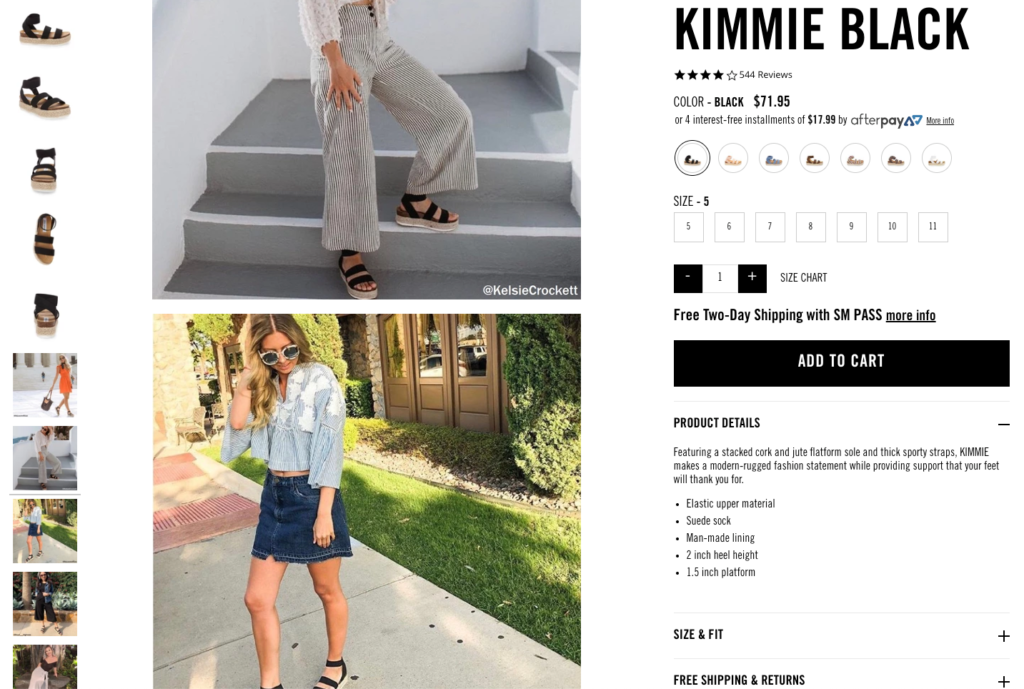
While browsing through a product’s picture gallery, you can see how the product appears on real people without having to go all the way to the bottom of the page.
This is a clever technique to get your consumers to advertise your items on your behalf, beneficial if you’re in the garment marketing industry.
Offer Free Shipping to Shoppers
Because of these factors, free shipping is one of the most effective incentives you can provide your visitors to encourage them to finish their buy and improve their average order value.
Consumers are more likely to purchase more items when free delivery is available; you may provide free shipping without incurring additional expenditures that reduce your profit margins. There are several ways to utilize it efficiently.
If you want to prevent cart abandonment, you may provide limited-time free shipping. If you’re going to upsell your consumers, you can use free shipping as a tactic at checkout.
You may also utilize free delivery as an incentive to gather email addresses in addition to the above.
Take a look at this sample from Everlane:
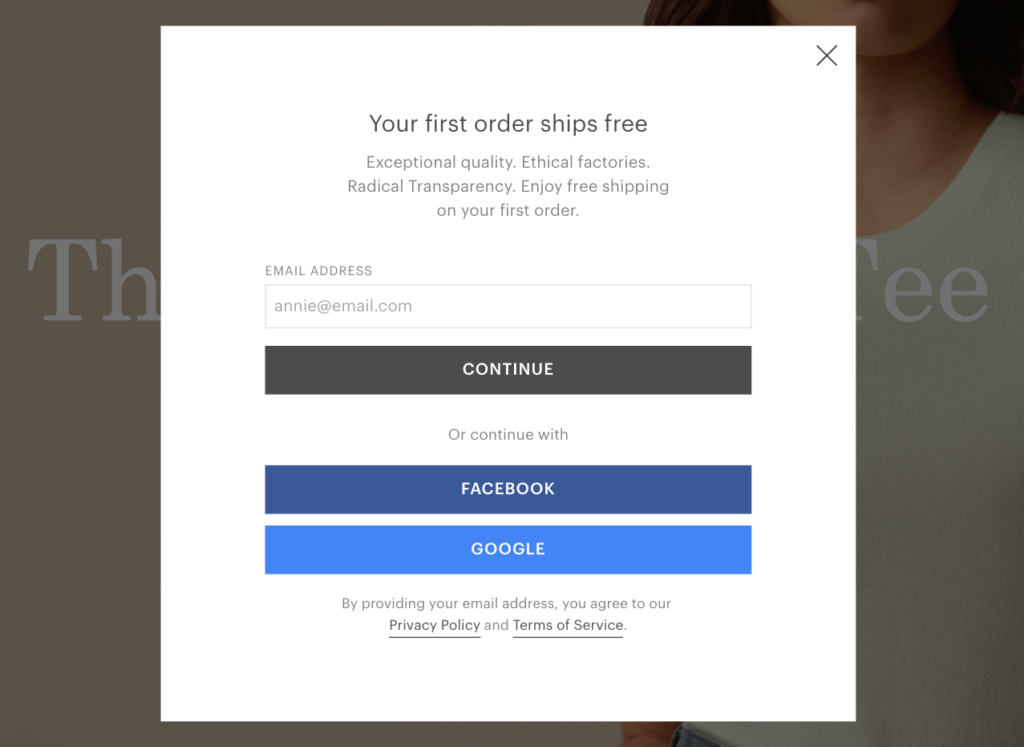
You’ll get this email popup if you visit the company’s website but don’t have an account. The email has a benefit-driven title that states, “Your first purchase ships free.”
To attract customers, Everlane does not utilize a generic popup title such as “Sign Up” or “Join Our Newsletter.” Instead, it employs the compelling incentive of free delivery to attract customers.
This method is particularly effective if you cannot provide free delivery to every consumer at the moment.
Suppose you don’t want to reduce the perceived value of your items by supplying discount coupons at the register. In that case, first-time free shipment is a perfect alternative to offering discount codes upon registration.
Boost Average Order Value on Product Pages
The fact that product pages are the core of your e-commerce site is something you’re probably already aware of.
Likely, you’re already putting effort into improving your product pages to convert more people into paying clients.
While acquiring more consumers is one means of increasing your income, there is another approach that you may have overlooked: increasing your profit margins.
By using on-page methods like cross-selling and upselling, you may improve the average order value of your consumers while also generating more income from each transaction.
Product suggestions are an excellent cross-selling technique that encourages your customers to add other goods to their shopping cart. In addition, they make it easier for users to navigate across your website.
Using the power of “looks,” you may propose other goods and accessories that compliment the first offering if you’re in the clothes marketing business.
Use Missguided as a source of inspiration:
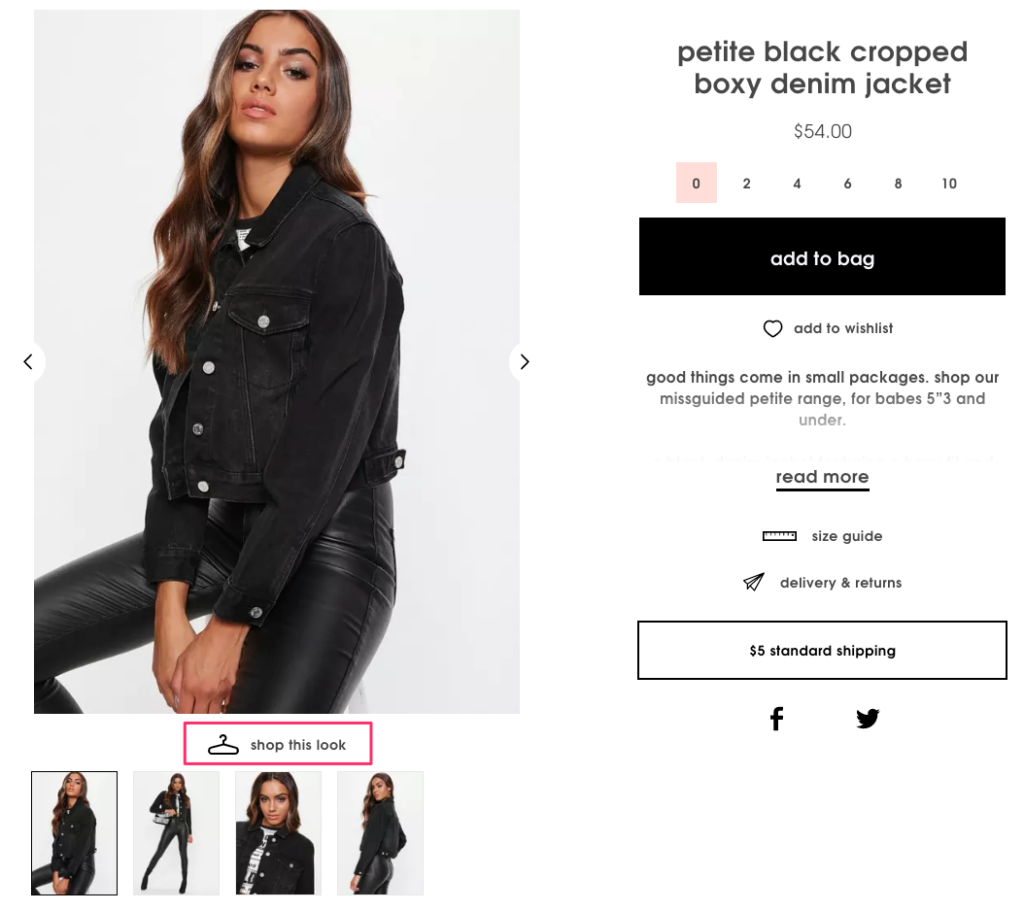
A button with the words “Shop This Look” will appear under the product picture on one of Missguided’s product sites when you visit one of their product pages.
When the button is pressed, a pop-up window appears, displaying the various things that the model is sporting:
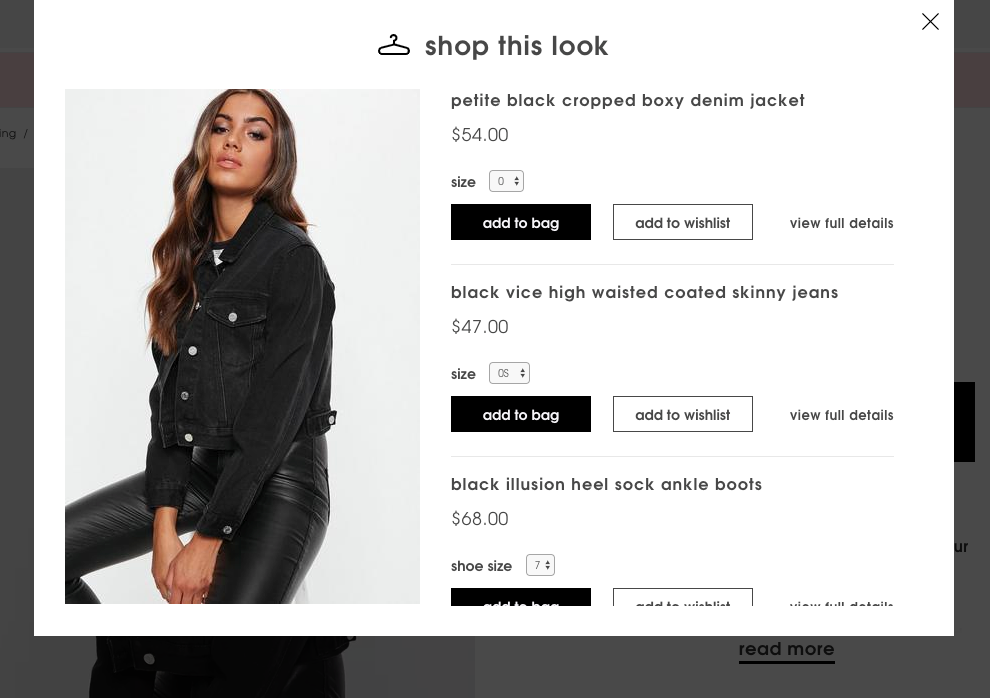
This is a clever approach to promote items and cross-sell to your visitors without interfering with their shopping experience.
Zalando is another clothes retailer that cross-sells by exploiting “looks.” They go one step farther than that, though, while doing so.
The following is an example of their product pages:
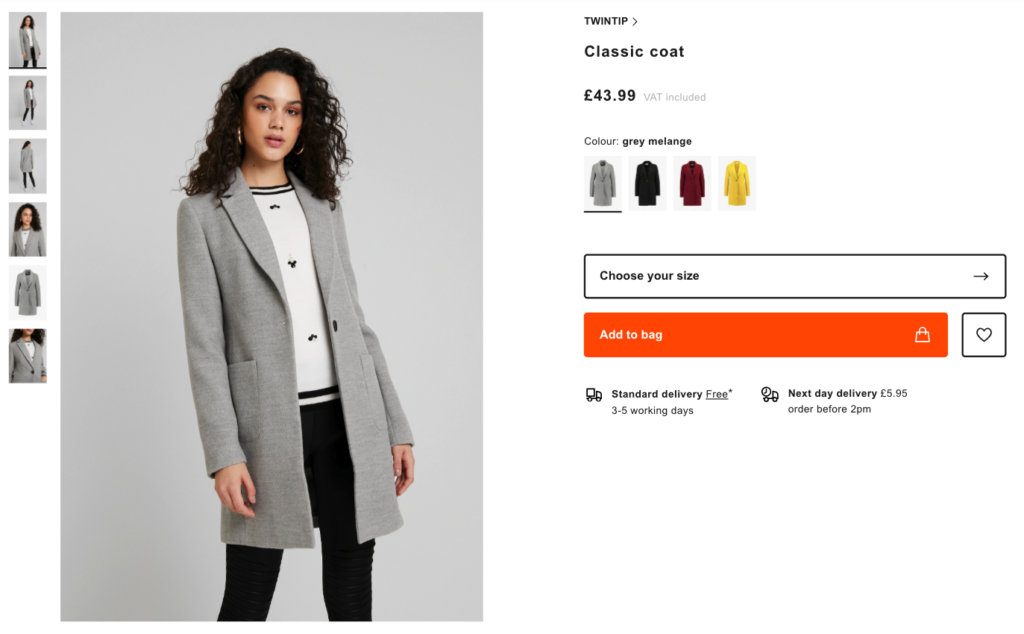
Zalando provides its customers with seven distinct ways to wear a thing just underneath the primary product information (all with price information and product links.)
Take note of how they package this cross-sell as “Complete the look” and how effectively this technique matches the needs of fashion e-tailers in particular.
Create a Sense of Urgency and Scarcity
Fashion marketers aren’t afraid to use at least one persuasive strategy, and it’s activating our fear of losing out on the next fashion trend (FOMO).
Knowing that customers despise being forced to give up their freedom of choice, intelligent clothes e-tailers often use scarcity and urgency to enhance sales.
The core idea of scarcity is straightforward: when something has a high likelihood of becoming unavailable, it seems to us to be more appealing. That is why we need to move quickly and seize the chance before it is too late.
And it is for this reason. Marketers urge us to act quickly before our favorite things sell out.
It’s one thing to tell your visitors that they should “purchase immediately,” but it’s quite another to demonstrate to them the real danger of being out of stock.
Only the most exceptional clothes e-tailers use the second route, and ASOS is one of them:
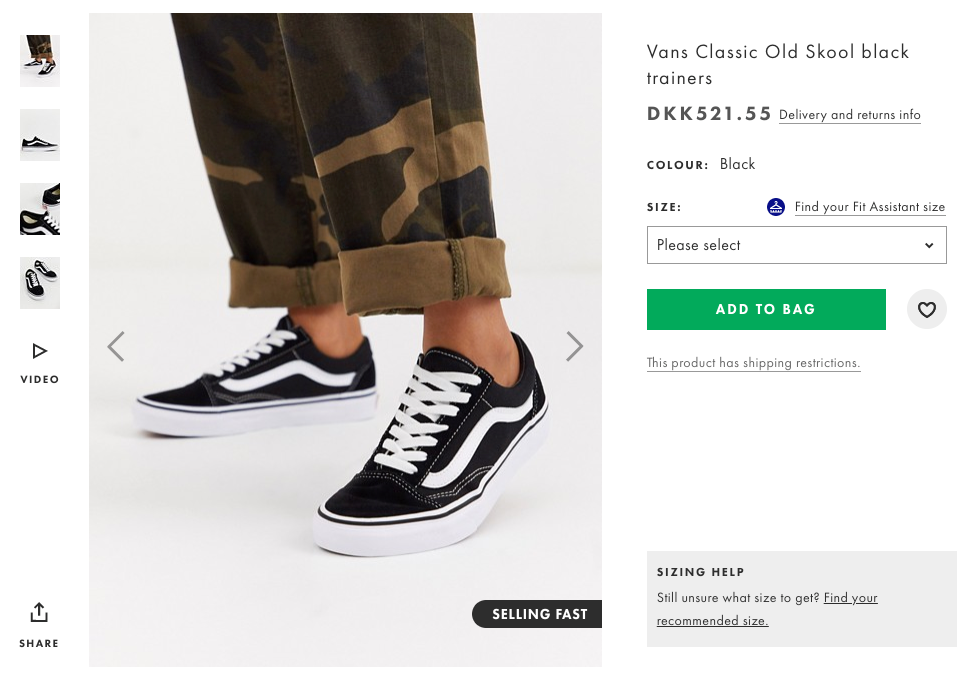
By affixing a “Selling Fast” sticker on its best-sellers, the firm demonstrates the goods’ popularity while also teasing the possibility that they may sell out.
If you’re even a little bit interested in this product, you realize you need to make a decision immediately.
Consider using persuasion triggers if you want to increase the sense of urgency and scarcity in your product listing pages, such as category pages or search results.
Here’s how Missguided does this with great success:
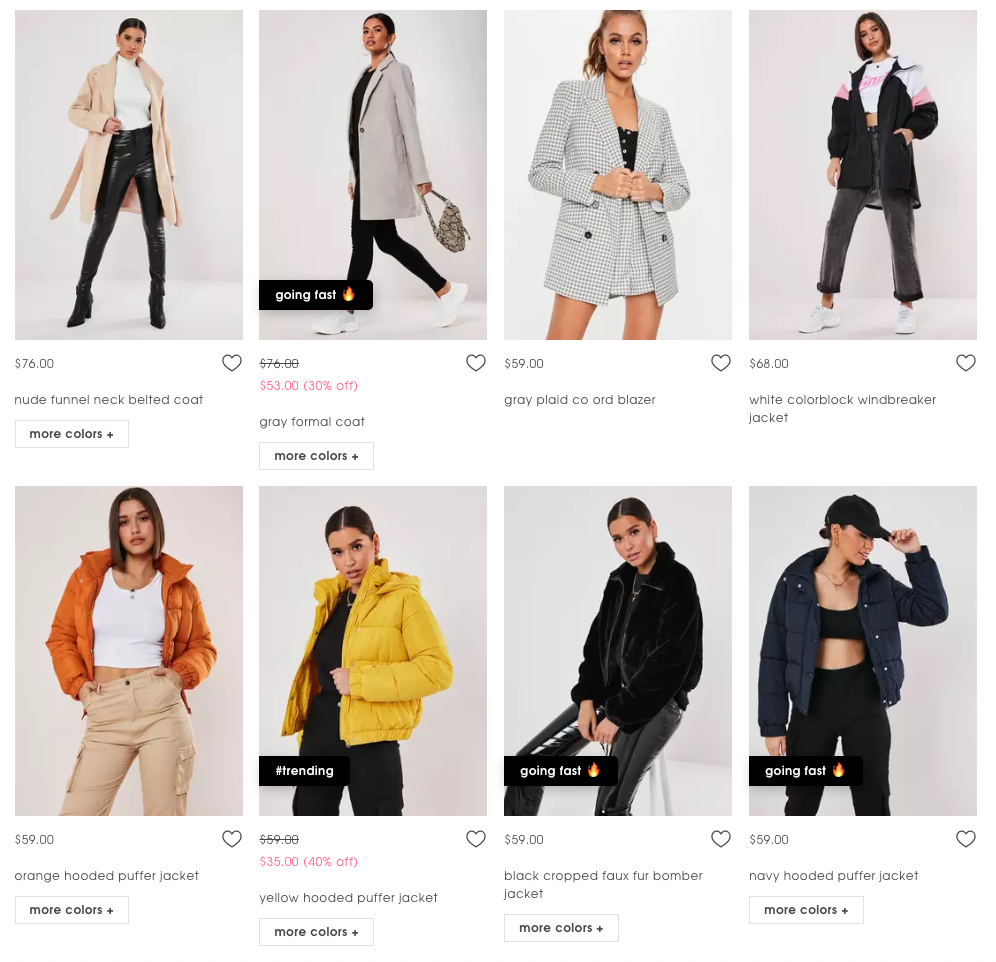
The urgency labels on popular goods that say “#trending” and “selling out quickly” will be visible when you visit one of their category sites, such as Coats and Jackets, when you visit one of their category pages.
It is essential to note the usage of emojis and hashtags appropriate for Missguided’s target demographic.
This is a clever technique to entice visitors to product sites while also assisting them in making a quick purchase decision.
Offer Size Guides
It is not always simple to shop for apparel and accessories on the internet.
As opposed to those who shop in brick-and-mortar shops, consumers who buy online have the issue of not trying on the items before purchasing them.
In the case of a clothing business, providing size advice on your website is an efficient method to assist your customers in making better purchasing selections while also reducing the possibility of returns and exchanges.
A significant number of businesses, on the other hand, link to their size guidelines, which open in a different tab, causing friction in the buyer’s path.
Instead of redirecting your visitors to a page that may cause them to lose focus on the purchase, you can develop a popup that appears when a “Find My Size” button is clicked on your website.
The following is an example of how your campaign may look:
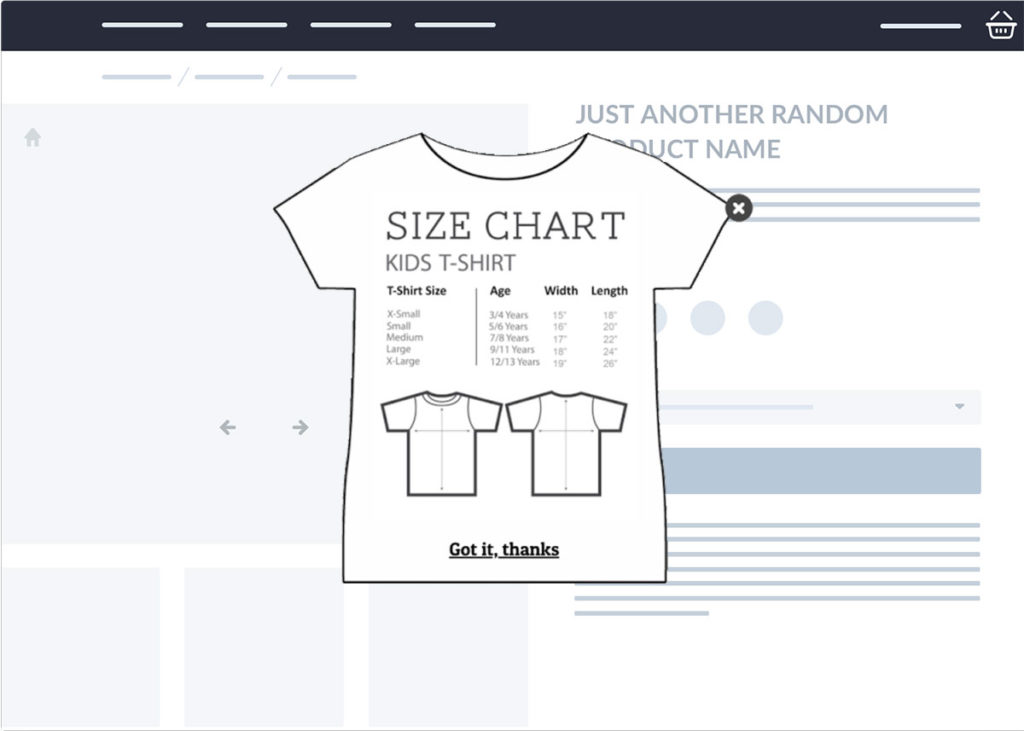
It is not simply clothing businesses that benefit from on-site size guidelines, contrary to common opinion. They’re an excellent fit for any clothing retailer.
Here’s an example of a product page on the Nordstrom website:
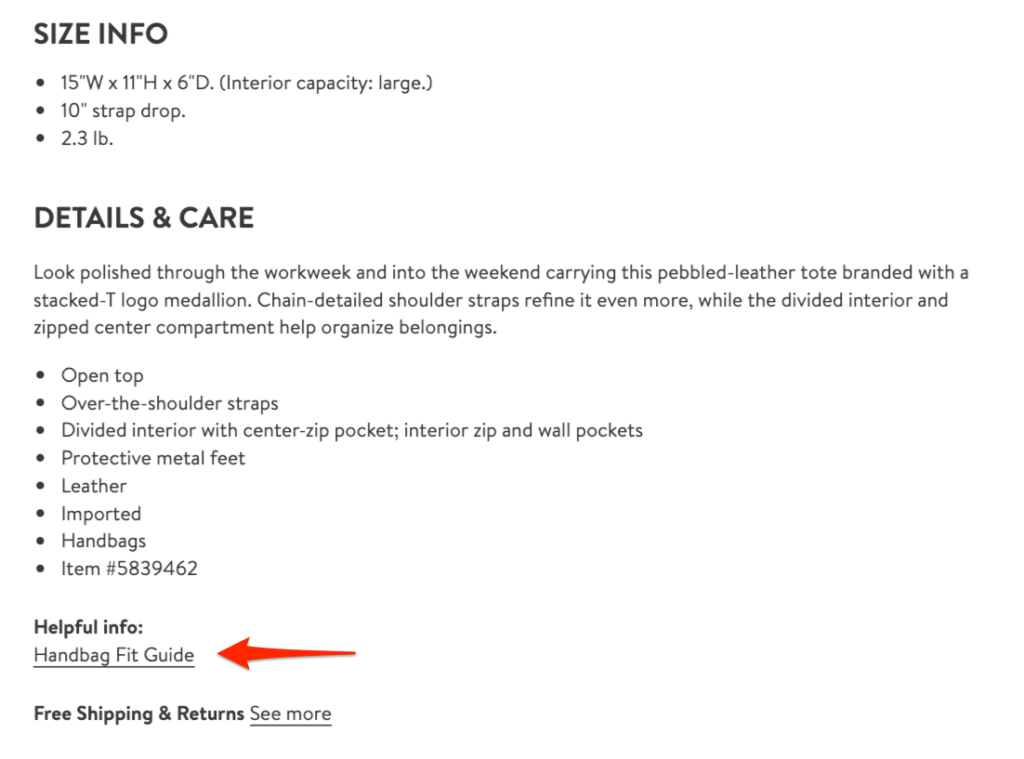
When you scroll down to read the product specifications for this handbag, you’ll see a link that says “Handbag Fit Guide.” Clicking on that link will take you to the “Handbag Fit Guide.”
When you click, the following size guidance appears:
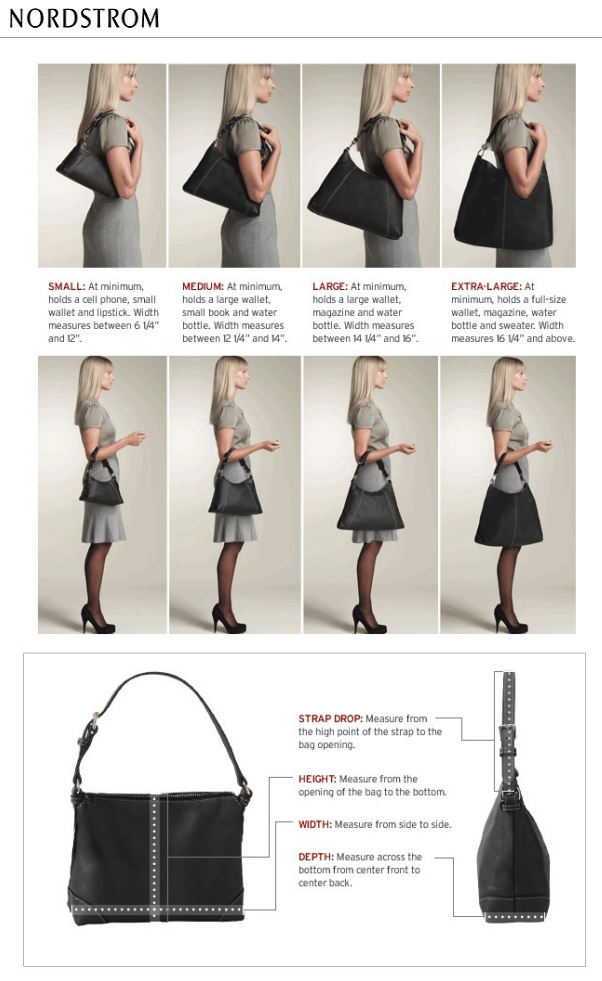
Nordstrom demonstrates how various-sized bags seem when a person in two distinct positions handles them.
This sizing guide assists you in visualizing the product more simple and makes it more appealing by placing it in a more natural environment.
It’s a successful method that all clothes e-tailers could use to deliver a better shopping experience and generate more sales.
Connect Your Brand with an Influencer
Speaking about social media, influencers are at the heart of some of the most successful fashion social media initiatives.
For those unfamiliar with the term, influencers are individuals within your business or specialty who have significant fan bases and demand attention – when an influencer publishes, and others take notice.
Getting an influencer to Tweet images of themselves wearing some of your apparel, for example, is one of the most effective methods to market a clothing brand. Finally, influencer marketing may be compared to high school; influencers are the famous students, and their followers are the other kids who look up to them and want to be as successful as they are.
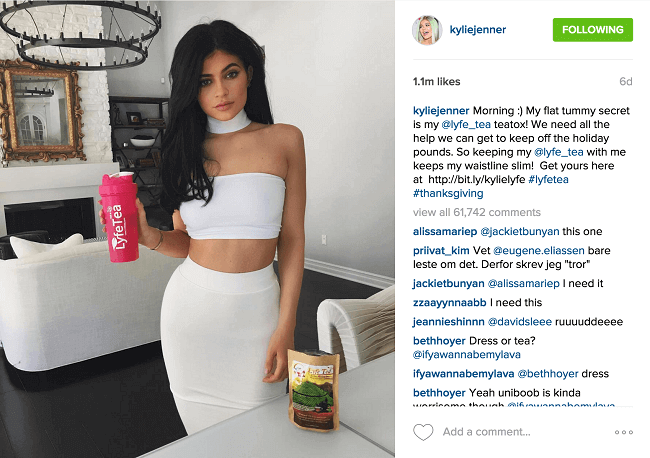
Consistency in Branding
The most successful fashion firms have a distinct style that is easy to recognize. Take, for example, Ralph Lauren’s clothing line.
The brand’s aesthetic has stayed constant throughout my life: navy blues, whites, reds, polo, preppy, and classic are all words that spring to me when I think of this company’s clothing. The organization has done an outstanding job of maintaining consistency in its brand image and marketing year after year.
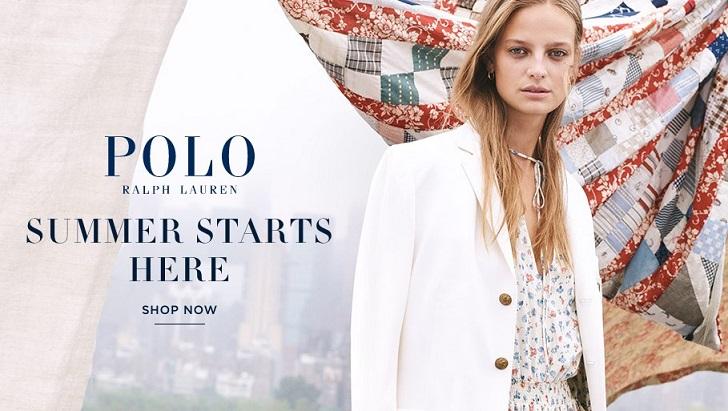
Publish Style Guides
If you work in the fashion marketing sector, you may find that matching shoes, apparel, and accessories are a natural and straightforward process.
On the other hand, your target audience is unlikely to have the same degree of fashion comfort. Therefore, create style recommendations to assist your customers in dressing their best. In addition to being valuable and instructional tools for buyers, they will also be excellent tools for you to utilize on your websites, email marketing campaigns, and social media advertisements.
Considering all of the possible applications, putting up some well-organized style guidelines is well worth the work!
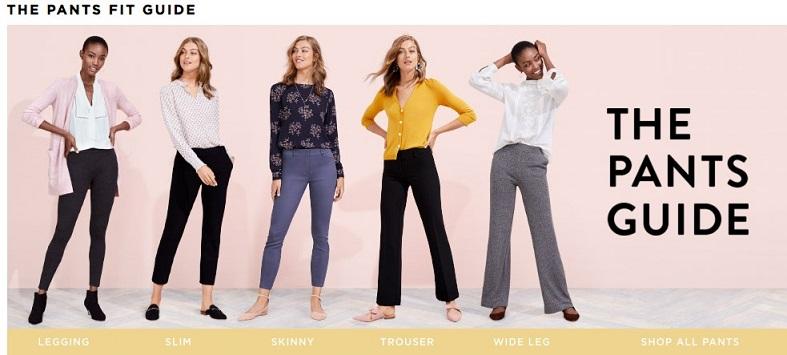
Maintain a High-Quality Blog
It is possible to utilize blogging as a very successful fashion marketing technique, in addition to serving as a terrific method to offer accessible and relevant information to your target audience. Furthermore, maintaining a continuous and high-quality blog may assist in improving the search engine optimization of your website, resulting in more free visitors.
It will also assist you in connecting with your audience to foster brand loyalty, which may lead to new brand collaborations. Finally, make sure your blog has a regular and consistent publication schedule with high-quality material to keep your audience interested and engaged.
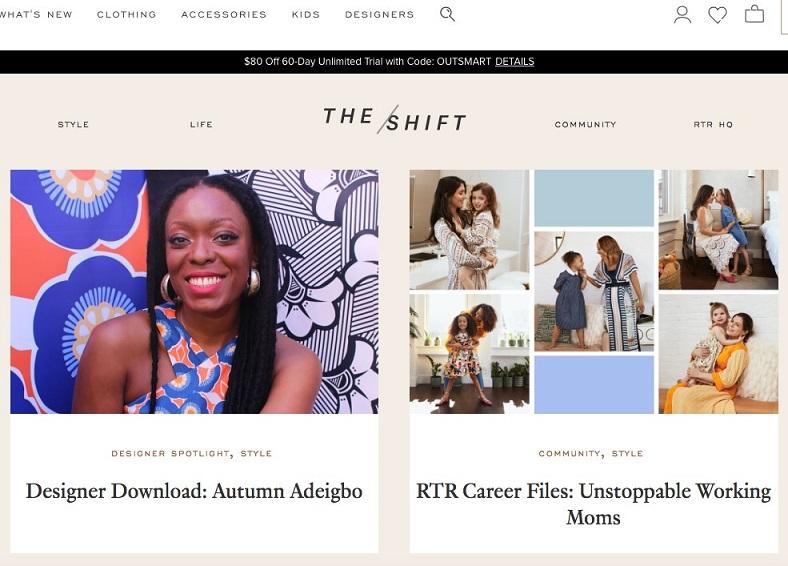
Instagram and Facebook Carousel Ads
Assuming you already have a social media presence on the most popular platforms, such as Instagram, Facebook, and Twitter, it is vital to utilize these platforms in the most effective manner possible to achieve your fashion marketing objectives to be successful.
One approach to do this on Instagram and Facebook is to choose the most effective ad types. For example, carousel advertisements enable you to show several photos in a magazine-like layout.
You might even consider them to be little style guidelines in their own right. So please make use of this ad type to highlight your goods, whether they’re your best-selling items, a summer dress collection, or a new range of men’s golf shirts for guys.
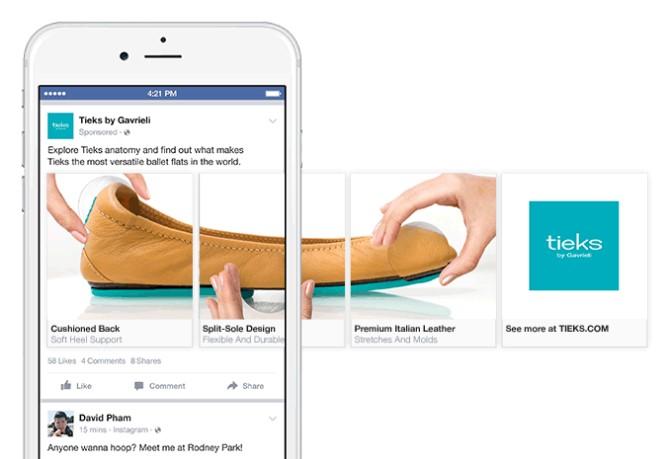
Case Studies
IFCHIC
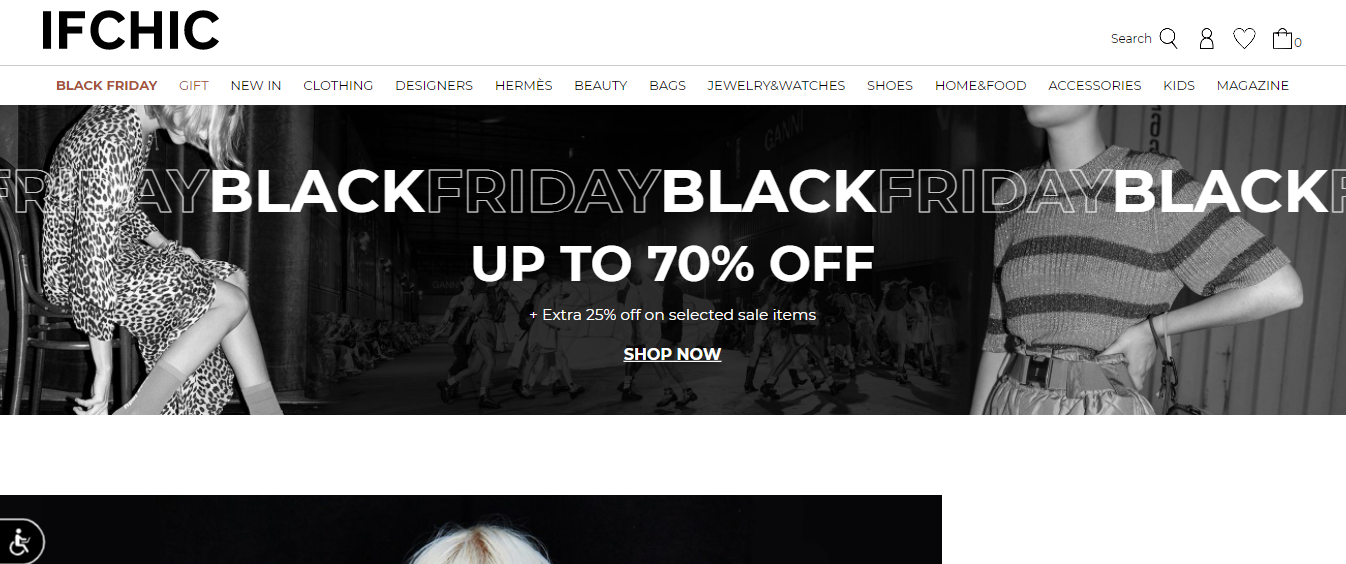
Background
IFCHIC is a multi-brand online retail website established in California that offers well-picked high fashion designer apparel in the United States and throughout the globe.
They had been publishing fashion-related items in their editorial area. Still, they required a more precise and successful plan to make these topics discoverable by their prospective clients when searching on Google.
Challenge
The most difficult challenge while redesigning their editorial strategy was ‘high competition,’ specifically for competitive keyword phrases relevant to their products such as jeans, sunglasses, pants, skirts, bodysuits and so on – everyone is writing about these popular topics at the moment.
As a result, they needed to devise a method of identifying themes that people were looking for but about which few people were writing and topics related to the things offered on the website.
What made the process even more difficult was that Google is quite cautious about releasing information about what people are looking for and, more importantly, how many people are searching for these terms.
Solution
- They began by identifying themes with a high search value on Google, which they did with care. Next, a low level of ‘editorial competition,’ which is not the same as a low level of ‘advertising competition,’ was sought in the next phase. When it comes to a given term, for example, numerous merchants may be prepared to pay to appear in Google’s sponsored search rankings, but only a small number of retailers may be writing about the topic.
- Consequently, their choice to write on the themes was based on editorial competition rather than how many marketers were bidding for that keyword at the time.
- To give you an example, people are constantly looking for the term ‘Jeans’ on Google, and there are more than 1 million results for this term on Google. Therefore, a blog article on ‘Jeans’ would have minimal influence on total SEO traffic if written a second time.
- If, for example, they were targeting “Taylor Swift’s jeans” rather than simply “jeans,” they would have a greater chance of increasing traffic because of the low level of competition.
- The authors were able to target a more targeted set of readers without having to contend with a high level of editorial rivalry by writing on widely searched and trending subjects.
- Each of the titles included a high concentration of keywords, was intriguing and was compelling enough to get visitors to click and read the whole article.
- When they discovered comparable goods in their inventory, they connected and inserted them directly into the postings themselves.
- This enables the buyer to read the content, check out items directly related to the issue, and then determine whether or not they want to purchase those things.
Results
Because of the above mentioned factors, the themes chosen are generating more traffic than the previously created articles, which targeted more competitive topics.
As a result, the business has seen a significant increase in organic Google traffic. Thanks to their copywriting staff for creating such exciting articles that perform well in Google’s search results and provide IFCHIC clients with a daily dose of fashion inspiration.
Final Thoughts
As you’ve seen in the case study, clothing store marketing can be highly fluid. Different stores commonly focus on marketing strategies depending on their brands, size, target demographic, and more.
